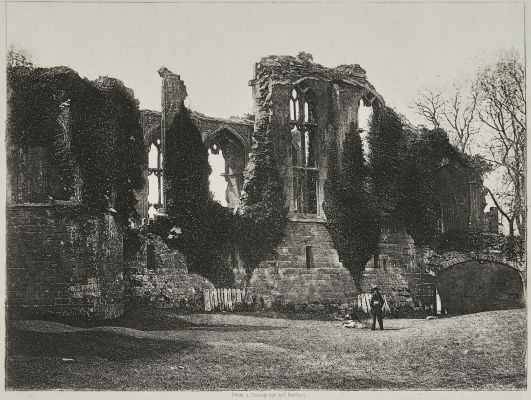
Title
Photograph From Nature, Engraved by the Dallastint ProcessArtist
UnknownPublication
The National Encyclopedia: A Dictionary of Universal KnowledgeDate
1885Process
Collotype (Dallastint)Atelier
Duncan DallasImage Size
16.9 x 12 cmSheet Size
24.5 x 16 cm
Duncan Dallas Photo-electric engraving, circa 1863, (worked from 1864 into the 1880’s) (modified Pretsch method), As explained by Dallas in 1863, "It was after experimenting some time with photogalvanography that it occurred to me to strike out in a different direction. Anyone acquainted with engraving is aware that aqua-tint and ‘chalk,’ or stippling, produce fine grain, half-tones, and detail. The problem I set myself was how to imitate this combination….It is something similar to this [aquatint grain] which I have succeeded in imitating, with peculiarities sui generis, by photography and the electrotype. I can also, as it were, modify the size of the dots, obtaining them so fine as to carry almost microscopic detail; but if too fine there will be deficient depth in the dark. In this, as in all things, there is a happy medium, and this I believe I have secured. I commence with a negative: this should be reversed. From the negative a positive proof is taken: this I prefer not toned, but merely fixed in the sepia colour of the ‘hypo.’ I cover the negative, which must be varnished with a material from which I obtain a latent positive. This latent positive I turn by a simple process into a suitable negative, and it is with this negative that I subsequently manipulate…If necessary, I can electrotype direct upon my material; but, as this might lead to the discovery of part of my process, I prefer to make a different kind of matrix.” (The Photographic News 1863, pgs. 363-364). Dallastype, Dallastint circa 1885, was a typographic modification of his process. Dallas claimed all of these processes as his. Dallas was originally the manager of the Photo-Galvano-Graphic Co. of Pretsch. A falling out had Dallas dismissed.
References
Hanson, David Checklist of photomechanical processes and printing 1825-1910, 2017 p. 37
